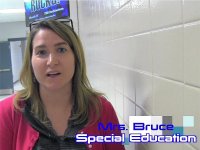Video and Professional Development: The Power of Observation
Video cameras in the classroom? Teachers gladly contribute to each other’s PD in a culture of safe sharing, support for best efforts, and collaborative growth mindset.
It's no secret that when most of us entered our first teaching position, we were simply given a classroom key, a policy handbook, and a roster containing names of the students who would be in our instructional care for that entire school year. All set? Not exactly. We quickly realized that we were shockingly unprepared for the daunting task set before us. Even with the best new-teacher induction programs, teachers are often left to their own devices with little guidance in determining the best ways to teach and reach every student.
Watching Teachers Teach
Like many of my peers, I was hungry to learn and grow in my craft. I knew that the level at which my students learned depended largely upon the level at which I taught them. Sure, there were millions of teacher-made lesson plans at my fingertips. However, I discovered the power of professional learning by watching others implement lessons in their classrooms. Of course, I couldn't just leave my students and walk next door to watch my neighbor teaching her students. However, just as athletes use video analysis to study the strategies of a star athlete on the opposing team or the effectiveness of a winning play on the field, I regularly refined my practice by watching teachers, in real time, execute instructional strategies that resulted in their students' eyebrows raising and their mouths dropping open because a light bulb had just been turned on in their minds. That was more exciting and inspiring for me than watching the NCAA championship football game!
Consequently, my lesson-planning regimen included scouring the internet for videos of skilled and innovative teachers in action. I often found such videos on sites like The Teaching Channel and Edutopia. Watching skilled teachers teach provided me with inspiration and ideas that I could replicate or redesign to fit my learners.
I soon pitched a proposal to my superintendent for the creation of a district-wide video repository of our local teachers using best practices in the classroom. I rallied together a few teachers across grade levels who agreed to let me set up a camera and tripod in their classrooms. Although my superintendent loved the idea, it became apparent that video in classrooms was slightly premature for our district. I realized that video could broach the idea of being judged or scrutinized. Also, when I discussed the idea with a retired teacher-friend, she expressed what I now call the secret ingredient factor: "If I share my best practice, I could lose what makes me the best." For whatever the reason, the proposal ended up on the cutting-room floor.
Knocking Down the "Walls" That Separate Us
Five years later, I began serving as an instructional specialist for my district. I set the goal to support teachers in realizing the truthfulness of R.J. Meehan’s words, "The most valuable resource that all teachers have is each other." Consequently, by that year's end, we launched a district video-hosting website that featured 26 classroom clips of local teachers sharing lesson ideas and best practices. "We have our very own Teaching Channel!" exclaimed a sixth-grade English teacher, a sentiment shared across our district. The site now hosts 55 in-house videos, and will surely have more by the time this article is published.
Using videos of model classrooms from other districts for PD purposes is common today. However, teachers often dismiss these with "Those students are not our students," or "That district has a different demographic." Hence, filming teachers who teach students from the same school, the same district, and similar backgrounds made the difference for our teachers to embrace this type of sharing. Notice a few anecdotes of how this resource is being used:
- Teachers at Forest Hills Elementary stopped me to say thank you. I asked, "For what?" They replied, "During grade-level meetings, we examined the video you posted of Mrs. Moody's math lesson from Harlan Elementary. It was very helpful!"
- Three second-grade teachers from three different elementary schools requested a collaborative video of themselves teaching the same math concept in three different ways.
- After commending a kindergarten teacher at Harlan Elementary on how she engaged her students with a strategy that helped them to self-assess, the teacher replied, "Mrs. Dale, I adapted this strategy from Mrs. King's video from Weeden Elementary, featured on the [district video website] last month!"
- The instructional partner at Hibbett Middle School expressed how long it took her to scour the internet for a video demonstrating Think Time to use for faculty PD, until she came across the only video available at the time -- on our district video website!
- I just published a video demonstrating how the general education teacher and the special education teacher can improve learning for all students through a collaborative co-teaching model (as opposed to limiting the SpEd teacher to working with only SpEd students, and vice versa).
- Focal PD sessions held at one school (e.g. "Teaching Reading Through Tiered Instruction") are now being filmed and posted for all schools in the district.
We have truly knocked down the figurative "walls" that separate us!
3 Critical Elements
In order for even the best teachers to cultivate a willingness to have a camera in their classroom, there must be a few elements in place within the school:
- A culture in which teachers feel safe to share
- A culture that praises success and efforts to strengthen instruction
- A mindset of growth and collaboration
Video can be a powerful professional learning tool for nurturing the culture of teaching, learning, and connecting ideas and innovations. Ultimately, the more we develop and grow as teachers, the more we grow our students as learners.
Have you used video in your own professional development? Please share your experience below in the comments.
